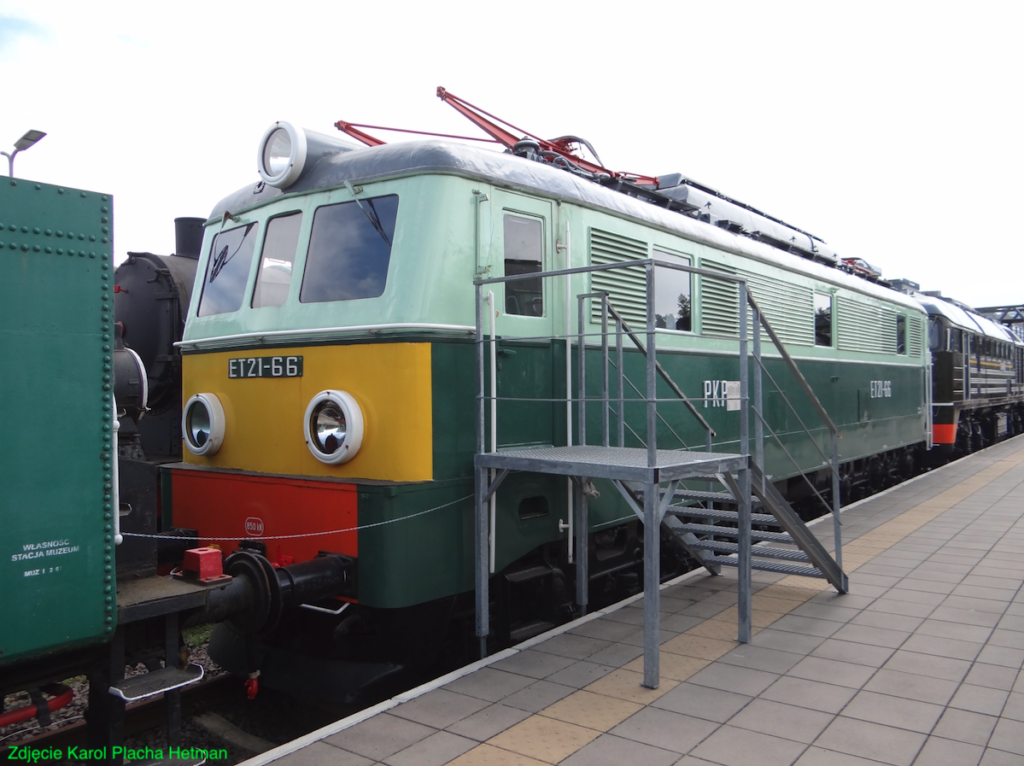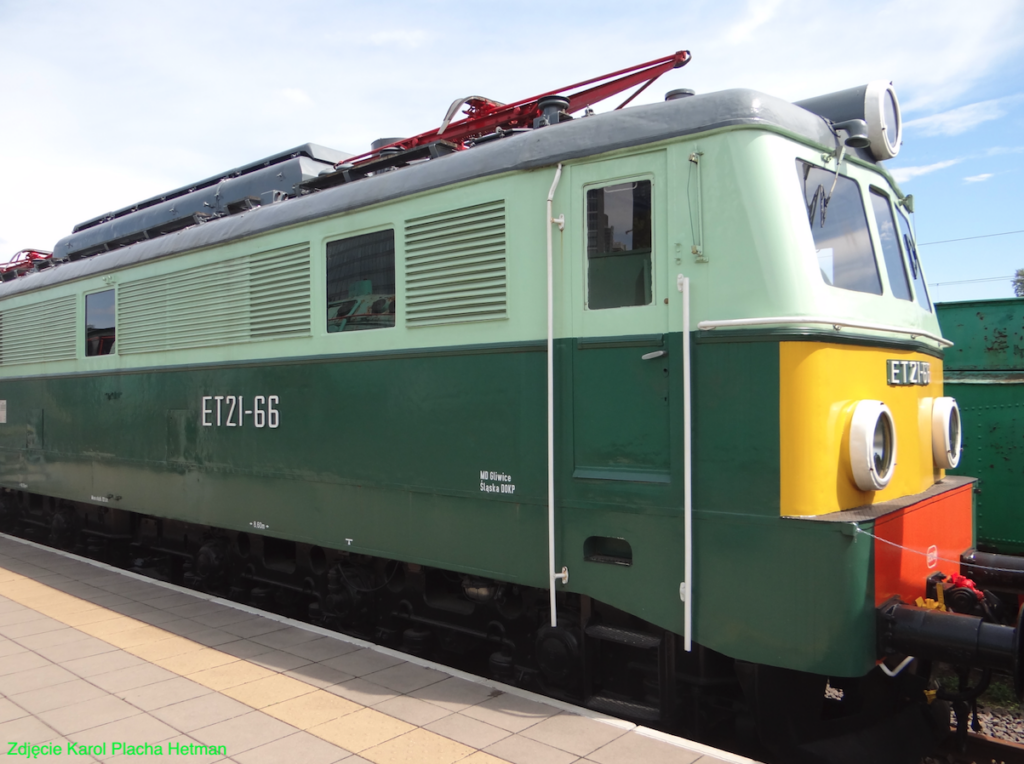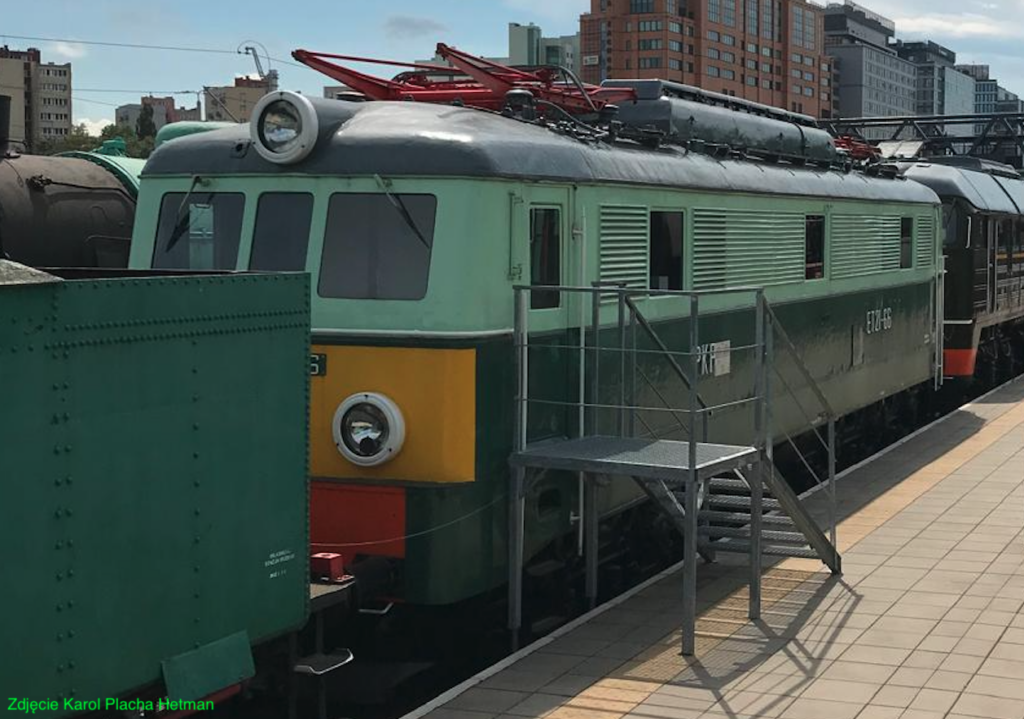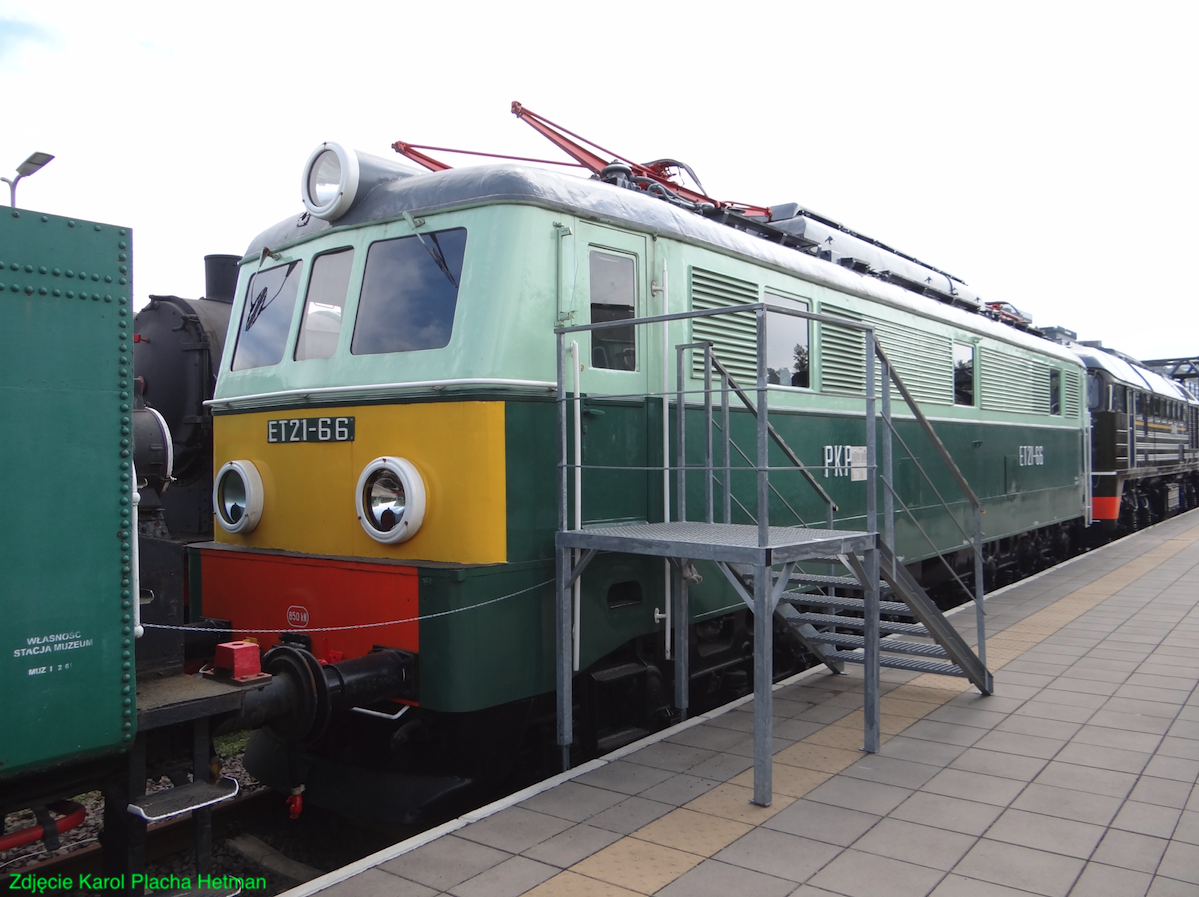Warszawa 2024-07-11
Electric Freight Locomotive ET21.
The ET21 was Poland’s first electric freight locomotive, which was produced in series at the “PaFaWag” factory in Wrocław in 726 units. In 1955, an electric locomotive adapted to pulling heavy freight trains was developed in Poznan on the basis of the experience gained. The product was designated PaFaWag 3E, and subsequent versions 3E/1, 3E/1M. On the PKP, the locomotive was designated the ET21 series.
The ET21 is a normal-gauge electric locomotive with high tractive effort. The locomotive was designed in 1957, at the Central Railway Equipment Construction Office in Poznań. The electric part of the locomotive was partly modelled on the Soviet design WŁ22M. The locomotive has a Co’co’ axle arrangement. Each axle is driven by one electric motor. Electric motors of the LKa635 or LKb635 type were used, which were manufactured at the ‘Dolmel’ plant. The transmission of the electric motor has a ratio of 85:24. The other electrical components were also manufactured at the “Dolmel” works. The locomotive has bogies with forked wheelset guidance, which was already considered an obsolete but acceptable solution at the time of design.
The locomotive body has driver’s cabs at the ends. The cabs have all the necessary instruments for driving the locomotive and are electrically heated. The high-voltage compartment has a lockable door that can only be opened after the pantographs have been lowered and grounded. The machinery compartment consists of the high-voltage compartment, the low-voltage compartment, the compressor system, the cooling system and others.
Data T-T ET21:
Co’co’ axle arrangement. Length 16.82 m. Height 4.56 m. Width 3.00 m. Weight 121,00 kg (version 3E), 114,000 kg (version 3E/1). Traction power supply 3,000 volts DC. Vehicles have a continuous power output of 1,860 kW. Wheel diameter 1.25 m. Electric motor transmission 85:24. Design speed 100 km/h. Westinghouse system brakes (upgraded Oerlikon). Two pantographs (current collectors).
Series production started in 1957, at the “PaFaWag” factory in Wrocław. The first version, type 3E, was built in a number of 72 units.
In 1960, the ET21 locomotive underwent modifications. The bogies of the locomotive were improved. The suspension of the traction engines was changed. The brake system and cooling system were improved. The thickness of the floor plates and body plating was reduced, resulting in a reduction of the locomotive’s weight by 8 tonnes. The electrical system was improved, replacing components with less fail-safe components. A removable roof was used, making access to equipment easier. The high-voltage compartment can now be removed in its entirety with an integral floor. There are now three rather than one window in the sides of the box, not counting the windows in the cab doors. Narrow ventilation grilles have been placed between the windows. Previously there were two square large grilles.
A modernised locomotive, designated Type 3E/1, began production in 1960. A further 589 locomotives were built. Production was completed in 1971. By 1971, a total of 726 locomotives of this type had been produced, 658 of which went to the PKP. 68 Type 3E locomotives worked for the Coal Industry Underground Materials Company in Katowice, the Sand Railway.
On the PKP, the first 17 locomotives were given the designation E06 (E06-01 – E06-17). This was the old designation system. Subsequently, all locomotives were designated ET21, according to the new designation system (standard RN-58/MK0001).
ET21 locomotives did not have the ability to run in diagonal traction. However, in the 90s, some new locomotive users introduced diagonal traction. Several locomotives were converted in this way. Some new users subjected several locomotives to significant modernisation and the designation was changed to ET21M or 3E/1M.
The first ET21 locomotives were sent to Silesia and to service trains which hauled trains to/from the Lenin Steelworks complex. They hauled wagons with coal, iron ore, steel products, aggregate and others. These locomotives were used, for example, at the Szczakowa sand mine in Silesia. The ET21 locomotives could run goods trains of 2,300 tonnes at 70 km/h. The locomotives performed well on difficult routes with numerous ascents and descents and tight curves. The ET21 locomotives were also used on passenger trainsets and even express trains despite the typical characteristics of freight traction. ET21 locomotives pulled passenger trains weighing up to 700 tonnes at speeds of up to 100 km/h. This was possible because the locomotives were equipped with an electric connector for heating passenger coaches. Train drivers liked the ET21 locomotives for their robust, simple and reliable design.
The withdrawal of ET21s from PKP began in 1988. At PKP Cargo, the locomotives were still in use in 2015. In the 90s, several new companies bought a number of ET21 locomotives from PKP. By railway enthusiasts and railwaymen the locomotive is referred to as “Sputnik”, “Kant”, “Television”. ET21 locomotives were replaced by ET22 locomotives.
Electric locomotive ET21-66.



Locomotive ET21-66, has the serial number 3E-80, and belongs to the second serial type. The locomotive was manufactured in 1960. On 20 December 1960, the locomotive was assigned to MD Kraków Prokocim. In March 1967, the locomotive was transferred to MD Gliwice. On 9 March 1991, the locomotive was sent to MD Czechowice Dziedzice. On 28 December 1994, the locomotive was written off from PKP stock. In 1998, the locomotive was handed over to the Railway Museum in Warsaw, now “Museum Station”. The locomotive was brought to the Railway Museum in Warsaw on 30 October 1998. In 2021, the locomotive underwent restoration for exhibition purposes. The work consisted of removing the old varnish coating and filling in losses in the plating. The driver’s cabs and technical compartments were conserved. Corrosion protection paint and a new body paint were applied. The locomotive was protected with an anti-graffiti layer, i.e. against vandals.
Written by Karol Placha Hetman
